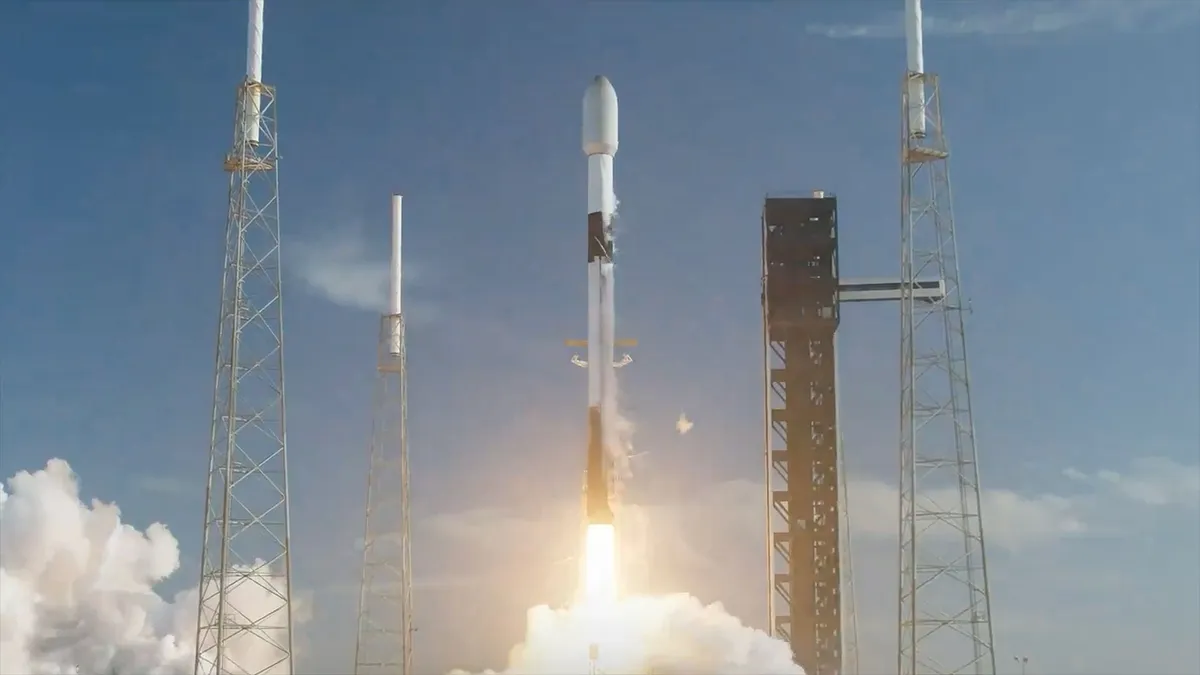SpaceX, the spearheading aviation company established by Elon Musk, proceeds to grow its Starlink adherent group of stars with the fruitful dispatch of 23 extra satellites from Florida. This most recent mission speaks to another point of reference in SpaceX’s driven objective of giving worldwide high-speed web scope.
SpaceX propelled 23 more of its Starlink web satellites to circle on Sunday evening (April 28).
The Starlink shuttle lifted off on a Hawk 9 rocket from Florida’s Cape Canaveral Space Drive Station at 6:08 p.m. EDT (2208 GMT).
To arrange, the Hawk 9’s to begin with organised came back to Soil for a vertical landing almost 8.5 minutes after dispatch.
It was the 13th dispatch and landing for the booster, agreeing to a SpaceX mission depiction. Half of the rocket’s past 12 flights were Starlink missions.

The Bird of prey 9’s upper organism, in the meantime, is set to send the 23 Starlink satellites in Low Earth Orbit(LEO) approximately 65 minutes after liftoff. Let’s dive into the subtle elements of the dispatch and its noteworthiness.
Mission of Spacex
The dispatch, assigned as Starlink Gather 5-11, took place from Space Dispatch Complex 40 at Cape Canaveral Space Drive Station in Florida. A Bird of prey 9 rocket, prepared with a payload of 23 Starlink satellites, lifted off into the clear Florida skies, checking the most recent arrangement in SpaceX’s fast extension of its obsequious web arrangement.
Building the Group of stars
The Starlink disciple star grouping points to supply high-speed, low-latency web access to underserved and farther ranges around the globe. With each fruitful dispatch, SpaceX includes more satellites to the star grouping, bringing the company closer to accomplishing its vision of making a worldwide broadband organisation that can interface with the foremost farther locales.
Sending and Circle
Taking after liftoff, the Hawk 9 rocket carried the 23 Starlink satellites into moo Soil circle. Once in position, the satellites were conveyed into their assigned circles, where they will connect the existing group of stars and start giving web scope to clients on the ground. This sending brings the overall number of Starlink satellites in circle to over 1,700.
Progressing Network
The extension of the Starlink obsequious star grouping has the potential to revolutionize the web network, especially in rustic and underserved ranges where conventional broadband foundation is constrained or non-existent. By leveraging an arrangement of moo Soil circle satellites, Starlink guarantees to provide high-speed web access to millions of individuals who already needed a solid network.
Worldwide Affect
SpaceX’s endeavors to send the Starlink toady star grouping have critical suggestions for worldwide network and financial improvement. Made strides to engage communities by encouraging get to instructive assets, healthcare administrations, and financial openings. It moreover has the potential to bridge the advanced partition and advance social inclusion on a worldwide scale.
Natural Contemplations
Whereas the development of the Starlink star grouping offers various benefits, it too raises concerns about its natural effect, especially in terms of space flotsam and jetsam and light contamination. SpaceX has committed to relieving these concerns through measures such as partisan deorbiting conventions and the advancement of sunshades to decrease the brightness of the satellites.
Conclusion:
The fruitful dispatch of 23 Starlink satellites from Florida speaks to another critical step forward in SpaceX’s mission to revolutionize the worldwide network. By growing its toady group of stars, SpaceX is bringing high-speed web access to underserved communities and progressing towards its objective of giving web scope to each corner of the globe. As the Starlink arranges to develop, its effect on society, the economy, and the environment will be closely observed, highlighting both the guarantee and the challenges of the space-based web framework.



